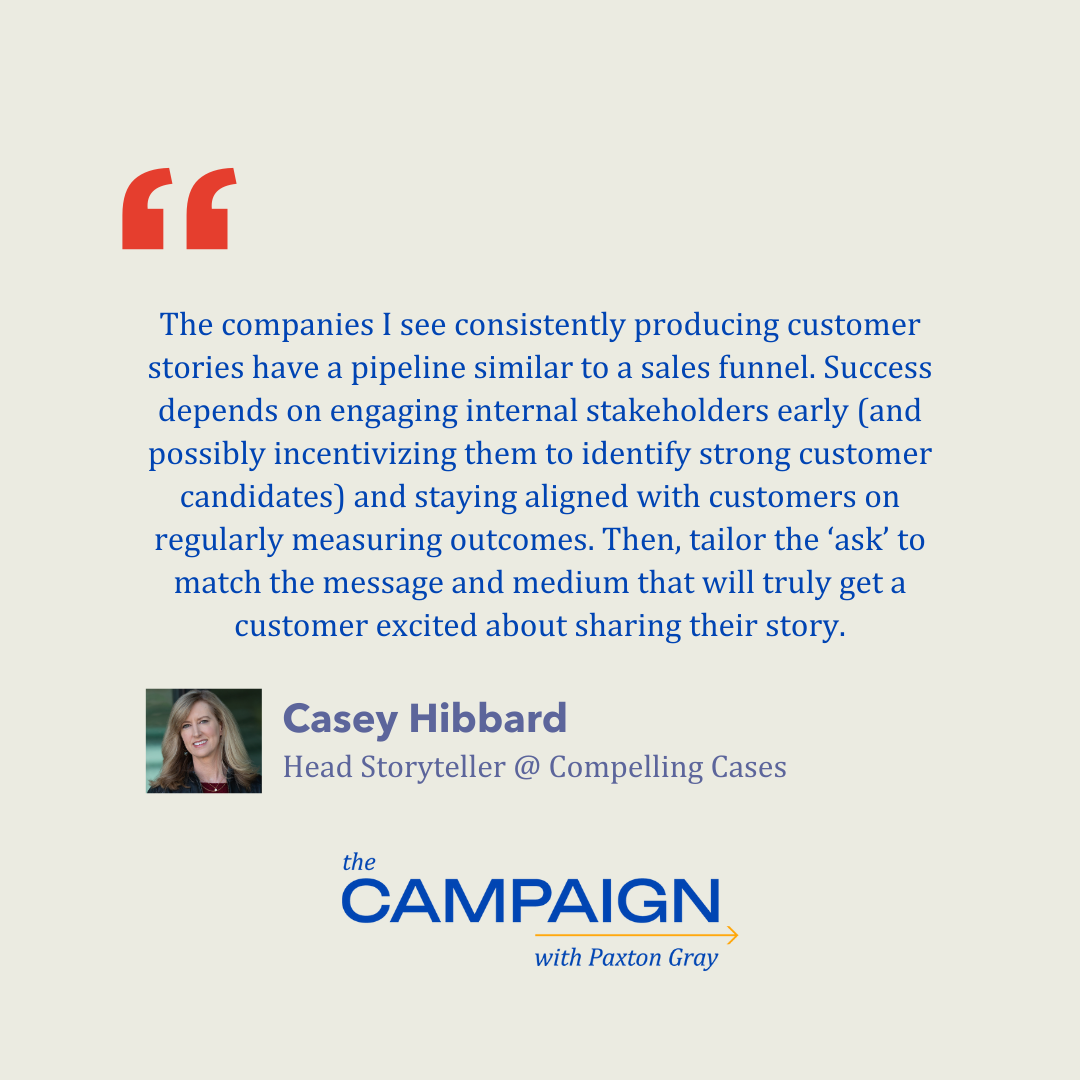Let's face it: case studies matter more than ever in B2B marketing. Recent research shows that 80% of B2B buyers look at case studies while researching purchases—making them one of the most powerful tools for winning new business. But here's the challenge: while most companies know they need customer stories, many struggle to create them consistently and effectively.
"I actually don't love the words case study because I think it's a bit dated and I think it's become so diluted from the academic world and it conjures up this bias of like, well there's this one very specific format," Klettke explains. The first step to improvement? Start thinking about customer stories that capture real transformation. This shift in mindset opens up possibilities for creating varied, channel-specific content that resonates with different audience segments throughout their journey.
The biggest barrier to creating effective customer stories isn't a lack of success stories—it's a lack of infrastructure. Most companies, regardless of size, don't have dedicated programs or clear accountability for customer story creation. Instead, they rely on a reactive approach where marketing is tasked with producing case studies on demand, without the necessary foundation for success.
Think of it like telling one player on a basketball team to "just go do a dunk" without any supporting plays or team coordination. Just as in basketball, customer stories require teamwork and strategy to execute effectively.
The most successful companies treat customer stories as the natural byproduct of strong customer relationships rather than isolated tasks. They build systems that make these stories inevitable, not occasional.
The key to transitioning from ad-hoc to always-on is developing a strong Standard Operating Procedure (SOP). Here's what your SOP should include:

As Joel Klettke explains, "no smart marketer sits down and goes, okay, I think I just need a blog post about anything. You've got to have some sort of overarching strategy that ties up and rolls up into business KPIs. That's why you're doing it. Otherwise you're just making noise and bashing a keyboard." Consider these strategic approaches:
Instead of reactively responding to every request, build a proactive story pipeline aligned with your organization's strategic goals. This approach ensures you're not just creating content—you're creating assets that drive business results.
Success in securing customer participation starts long before you make the request. Here are key principles for increasing your success rate:
"People publish these things once and forget about them and it's like driving a Ferrari only on Sundays. Like you bought the thing, you made the investment, use it," Klettke points out. Here's how to maximize their impact:

"The companies who are going to win are going be the companies who realize, they can steal our features, they can poach our people, they can copy our design, they can mimic our messaging, the one thing they can't take away from us that are ours to lose are our advocates, our customer stories," explains Klettke.
The companies that will win are those that make customer advocacy a strategic priority. But remember: a poorly told customer story benefits no one. Focus on authentic narratives that put the customer's transformation at the center.
By building the right infrastructure, taking a strategic approach to story selection, and maximizing the impact of each story, you can create a sustainable engine for generating compelling customer stories that drive growth.
The time to prioritize customer stories is now. Start by documenting your process, opening dialogues with other teams, and treating these stories as the valuable assets they are. Your future pipeline will thank you.

